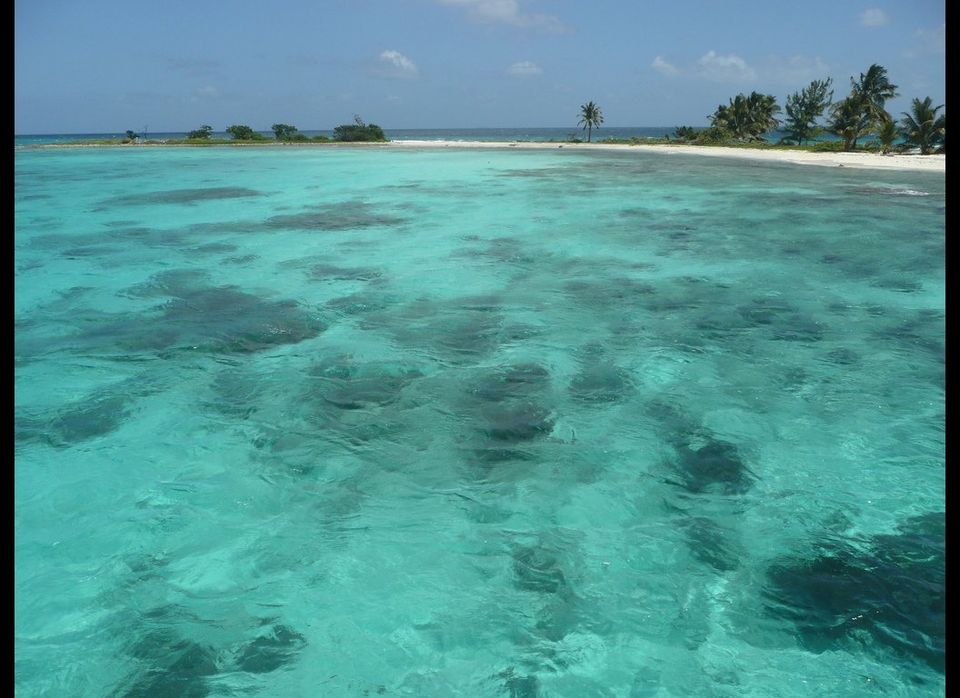The United Nations Educational, Scientific and Cultural Organization (UNESCO)'s list of World Heritage sites contains over 900 of the most important natural and cultural locations in world. Sadly, 35 of 200+ sites designated as natural World Heritage properties are considered in danger and face threats such as pollution, human armed conflict, poaching, uncontrolled urbanization, and unchecked tourism and development.
Here are five locations where humans have left their mark, perhaps irreversibly damaging some of the world's most biodiverse sites.
Belize Barrier Reef
Belize
The largest barrier reef in North America, this World Heritage site comprises a diverse range of coastal lagoons, mangrove forests and estuaries. It is home to many threatened species -- such as marine turtles, manatees and the American marine crocodile -- as well as over 425 species of plants and more than 500 species of fish. Dangers to the site include heavy tourism and other human development in coastal areas.
Kahuzi-Biega National Park
Democratic Republic of the Congo
Comprising mostly tropical forest, Kahuzi-Biega National Park is named for its two extinct volcanoes: Kahuzi and Biega. The park is home to one of the last groups of eastern lowland gorillas, of which only about 150 individuals remain, according to UNESCO. Kahuzi-Biega National Park is situated in one of the most densely populated areas of the Democratic Republic of the Congo, placing its flora and fauna - including many endangered species - under constant threat.
Rainforests of the Atsinanana
Madagascar
This World Heritage site comprises six national parks in eastern Madagascar, one of the most biodiverse countries on the planet. The African island is home to over 12,000 endemic plant species and several primate groups, including several species of lemurs. Madagascar's Atsinanana Rainforests are a critical to the island's unique ecosystem and biodiversity, but they continue to be threatened by deforestation.
Garamba National Park
Democratic Republic of the Congo
Located in the northeastern part of the Congo, near the Sudanese border, Garamba National Park lies between the Nile and Zaire rivers. Savannahs, grasslands, woodlands, forests and swamps make up the landscape, which is home to animals such as elephants, giraffes, hippos, chimpanzees, leopards, lions, antelope and the extremely rare white rhino. (According to UNESCO, only about 30 white rhinos remain in the wild). Despite local conservation efforts, poaching remains a significant concern for this World Heritage site.
Everglades National Park
United States
This South Florida World Heritage site is the largest mangrove ecosystem in the Western Hemisphere, the longest continuous stand of sawgrass prairie, and the most important breeding ground for wading birds in North America. Comprising freshwater marshes, tropical wetlands and seagrass ecosystems, the Everglades are home to more than 400 species of birds, 275+ species of fish, and over 800 species of land and water vertebrates. Some of these species include the Florida panther, snail kite, alligator, crocodile and manatee. However, these animals are threatened by a loss of marine habitat, and the site remains in danger due to the degradation of the entire ecosystem, thanks to agricultural and urban development, and pollution.
